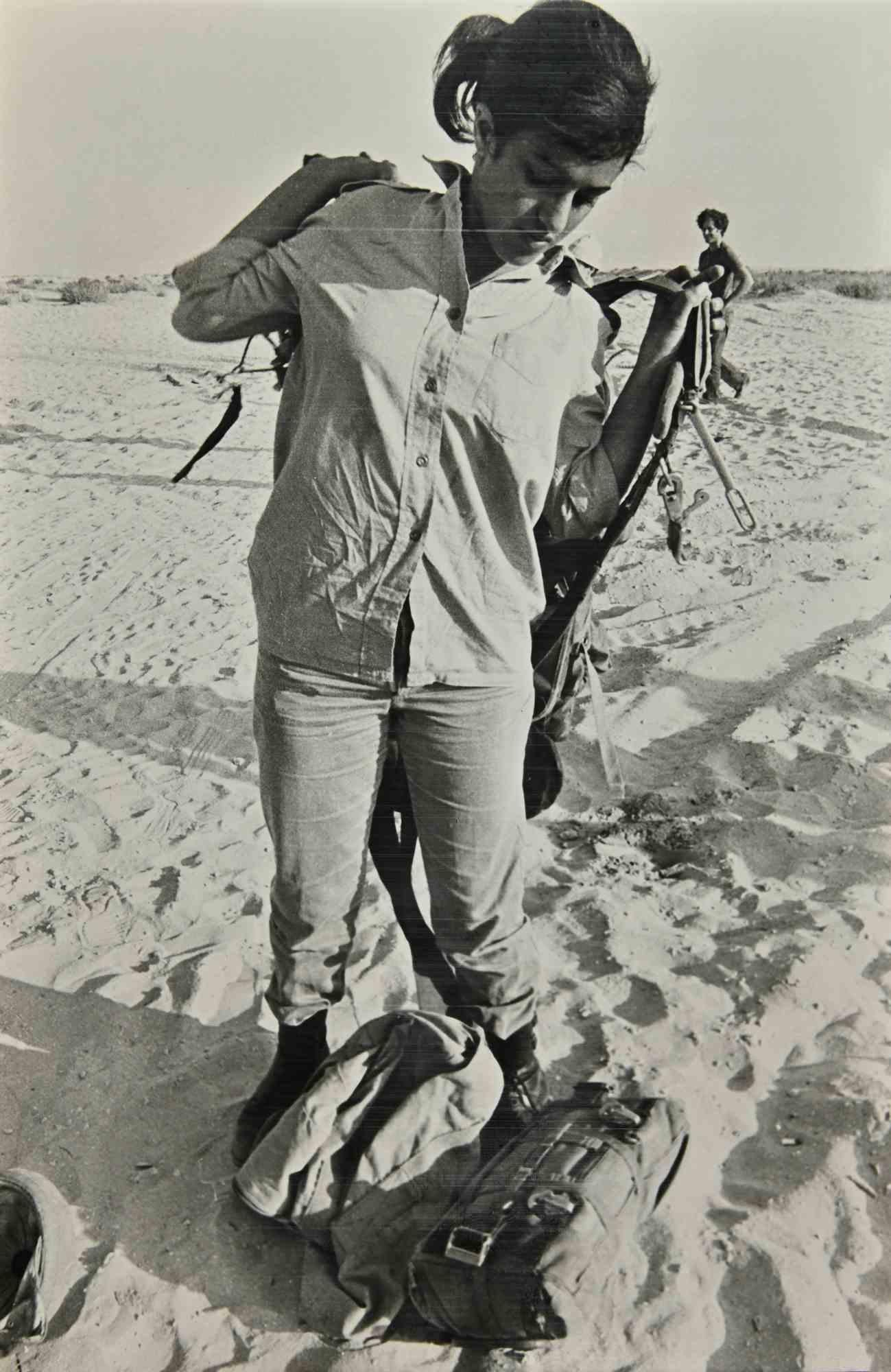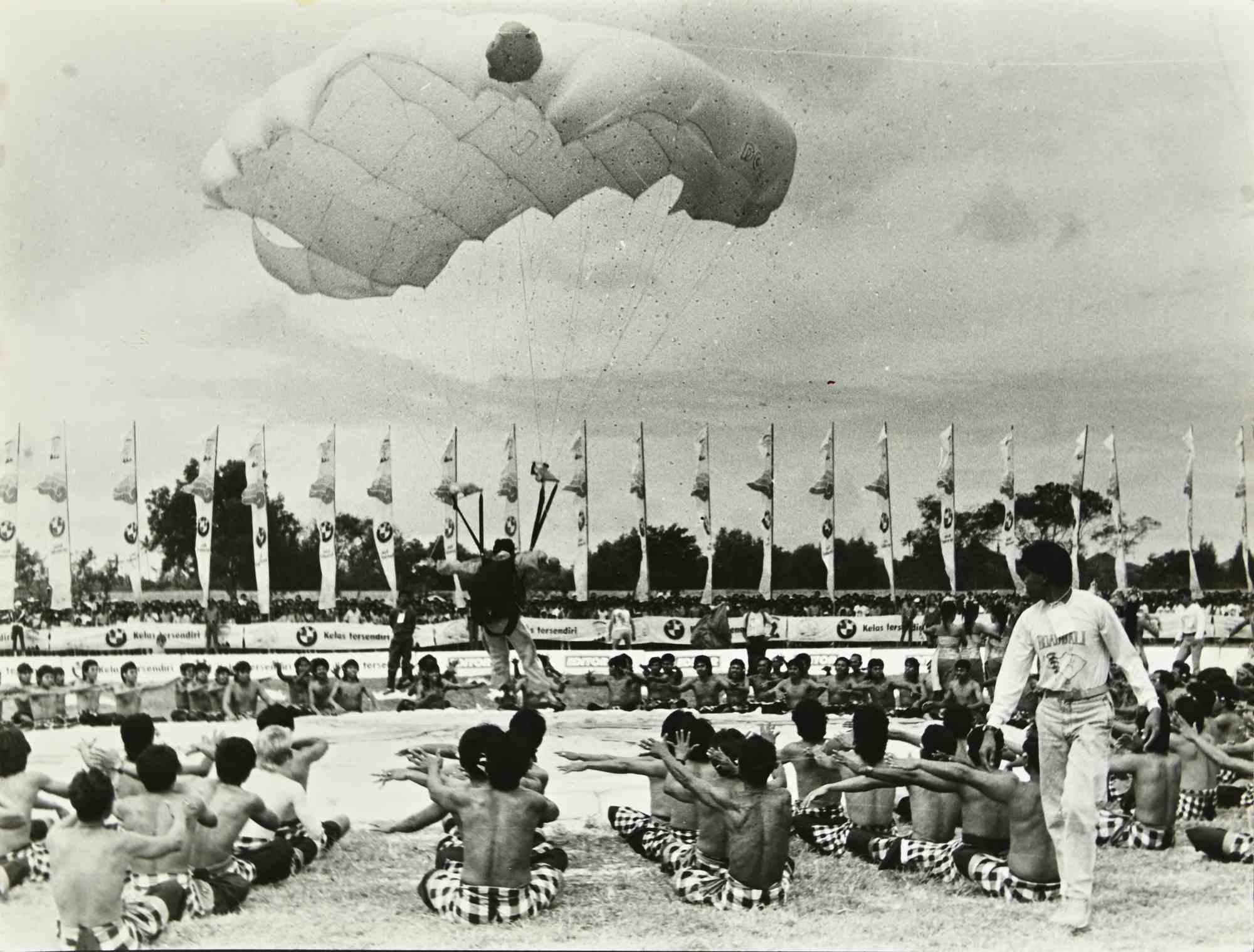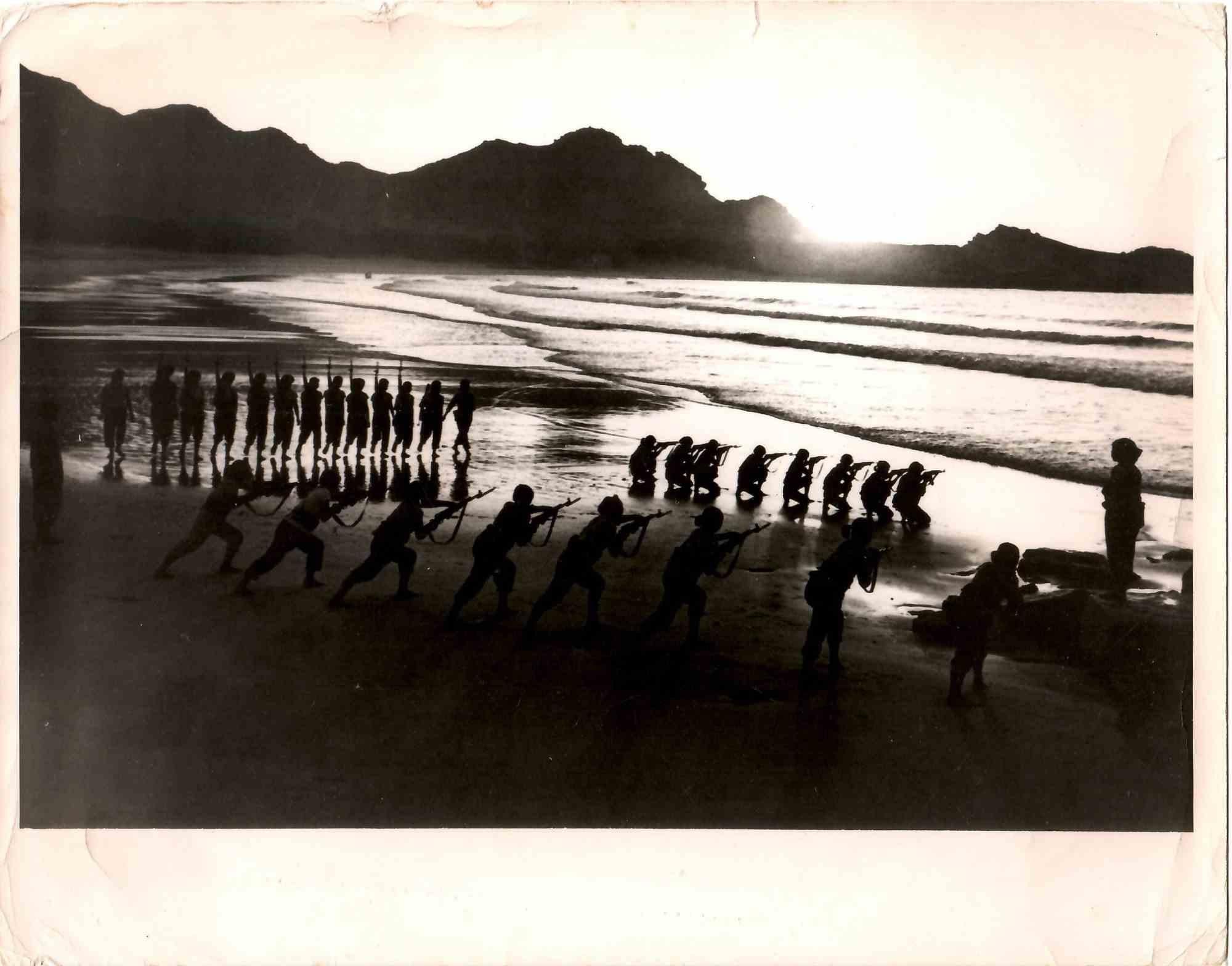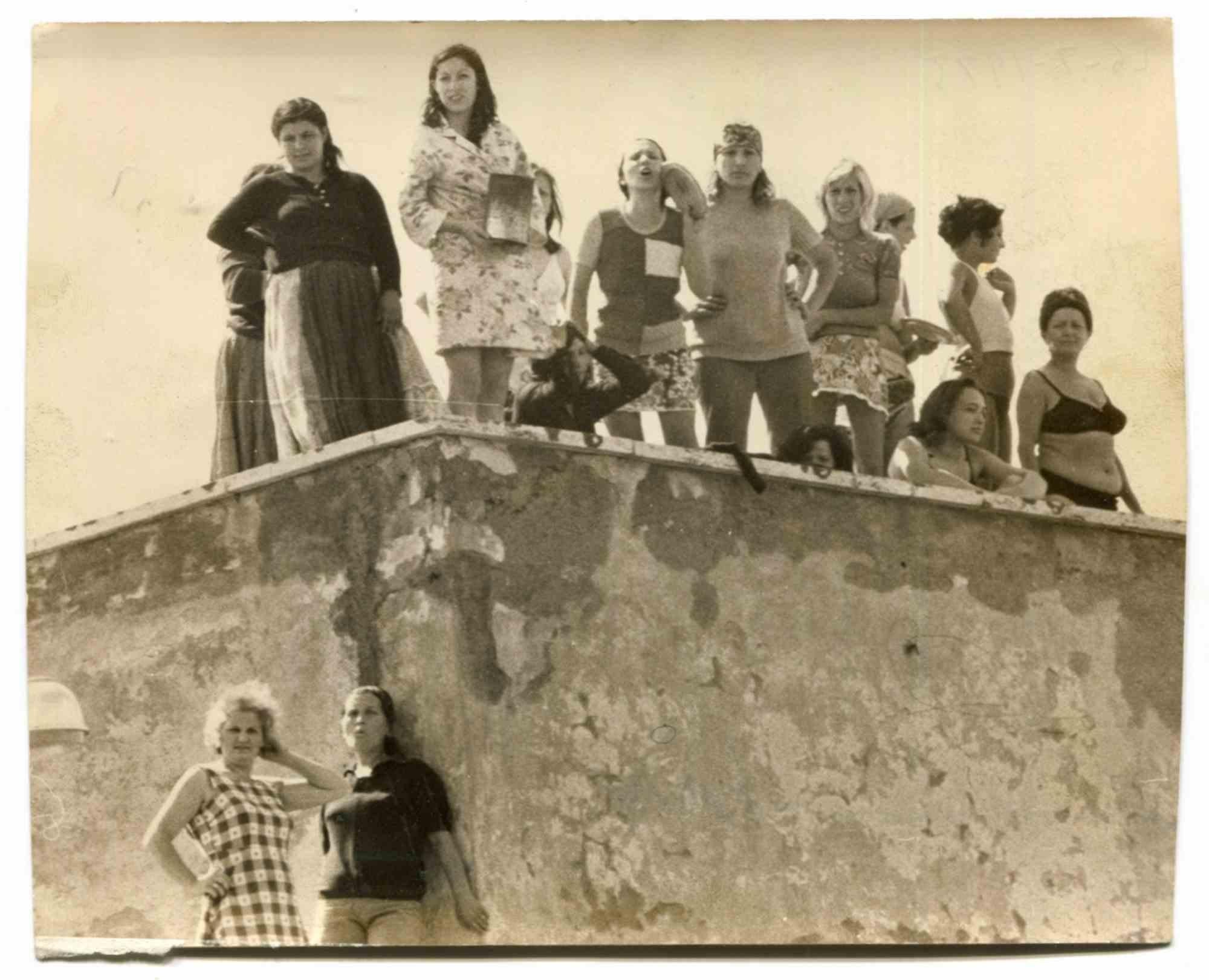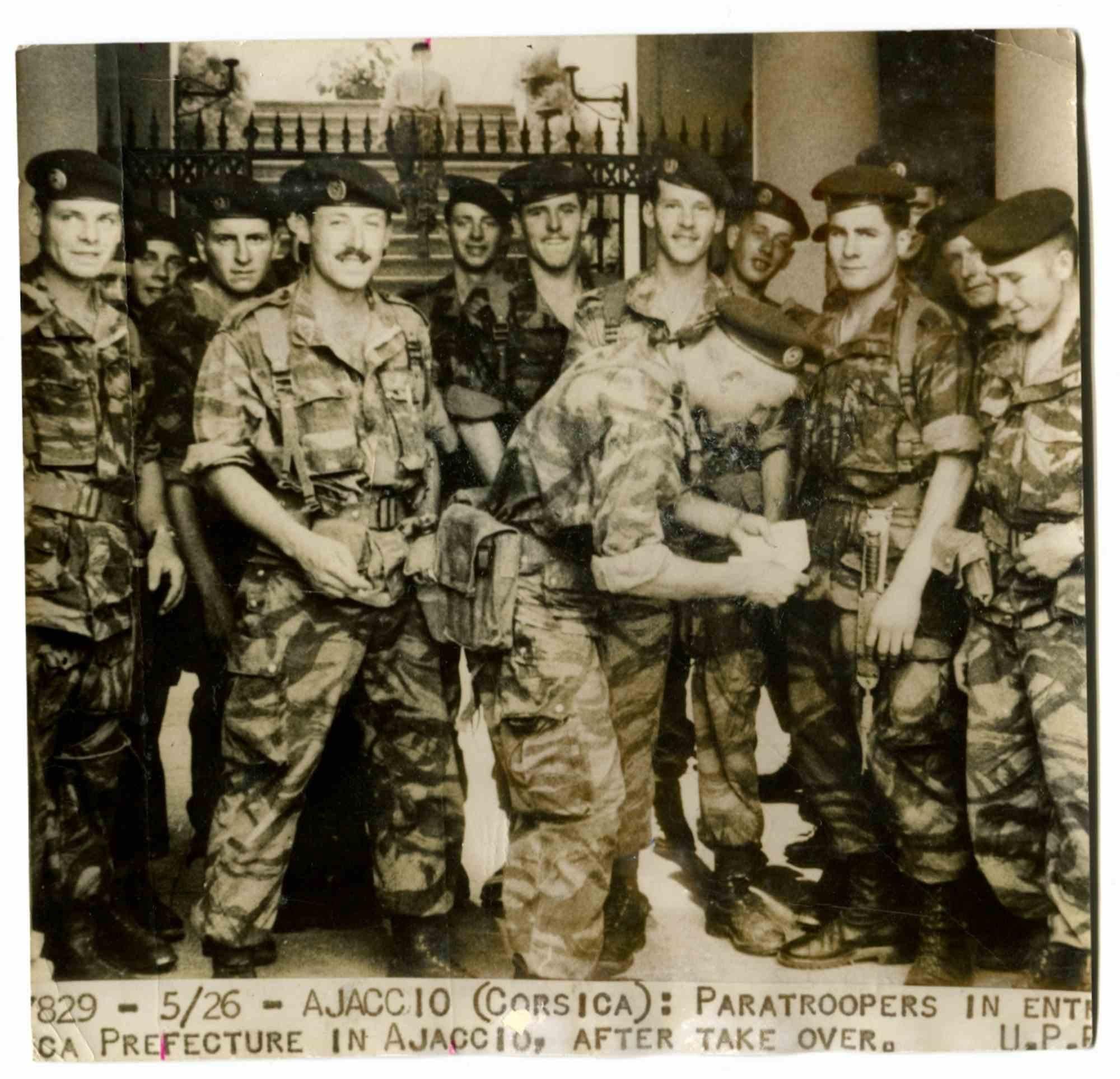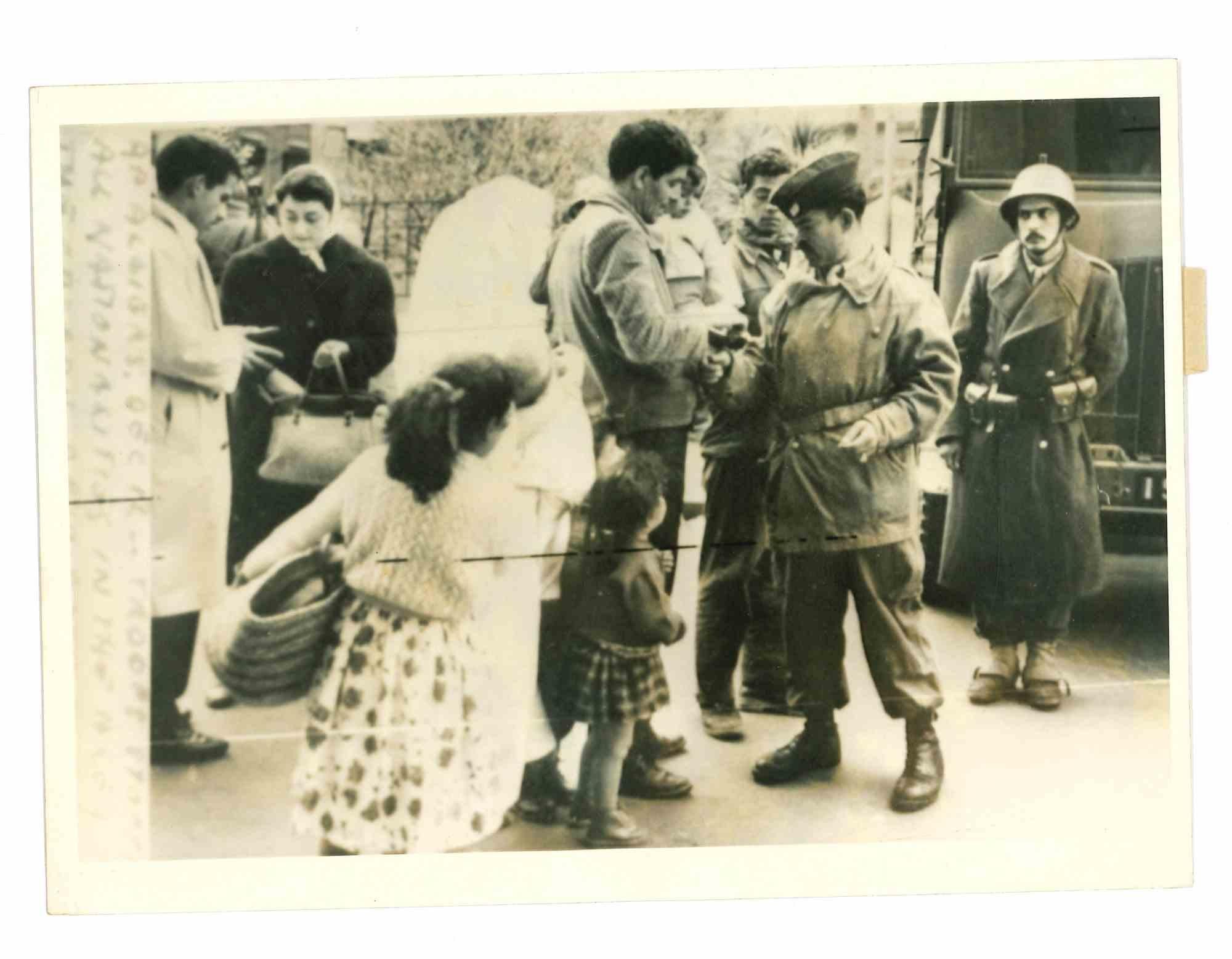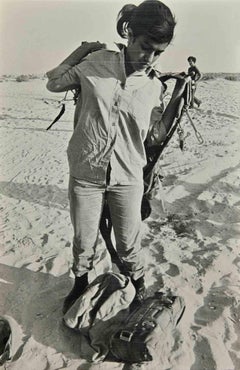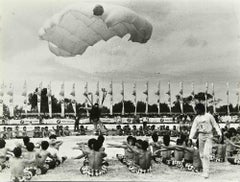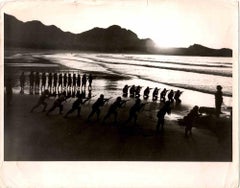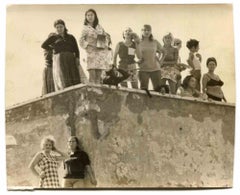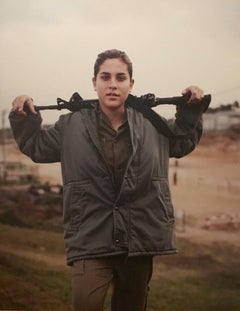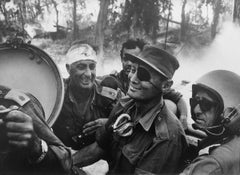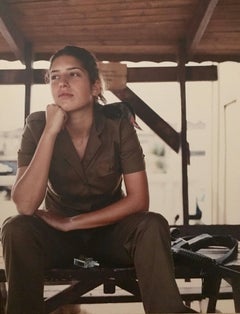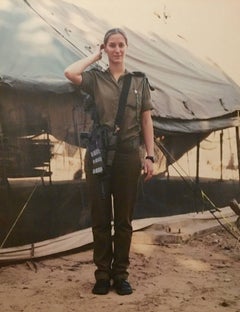Items Similar to Israel's Parachute Girls - Vintage Photograph - 1970s
Want more images or videos?
Request additional images or videos from the seller
1 of 2
UnknownIsrael's Parachute Girls - Vintage Photograph - 1970s1970s
1970s
$167.89
£124.89
€140
CA$229.89
A$255.61
CHF 133.46
MX$3,111.38
NOK 1,702.95
SEK 1,595.58
DKK 1,065.74
Shipping
Retrieving quote...The 1stDibs Promise:
Authenticity Guarantee,
Money-Back Guarantee,
24-Hour Cancellation
About the Item
Israel's Parachute Girls is a vintage black and white Photograph realized in the 1970s.
Good conditions.
The description on the rear.
- Creation Year:1970s
- Dimensions:Height: 9.85 in (25 cm)Width: 8.08 in (20.5 cm)Depth: 0.04 in (1 mm)
- Medium:
- Movement & Style:
- Period:
- Framing:Framing Options Available
- Condition:Insurance may be requested by customers as additional service, contact us for more information.
- Gallery Location:Roma, IT
- Reference Number:Seller: T-1394561stDibs: LU650312258532
About the Seller
4.9
Platinum Seller
Premium sellers with a 4.7+ rating and 24-hour response times
1stDibs seller since 2017
7,621 sales on 1stDibs
Typical response time: 2 hours
- ShippingRetrieving quote...Shipping from: Grasse, France
- Return Policy
Authenticity Guarantee
In the unlikely event there’s an issue with an item’s authenticity, contact us within 1 year for a full refund. DetailsMoney-Back Guarantee
If your item is not as described, is damaged in transit, or does not arrive, contact us within 7 days for a full refund. Details24-Hour Cancellation
You have a 24-hour grace period in which to reconsider your purchase, with no questions asked.Vetted Professional Sellers
Our world-class sellers must adhere to strict standards for service and quality, maintaining the integrity of our listings.Price-Match Guarantee
If you find that a seller listed the same item for a lower price elsewhere, we’ll match it.Trusted Global Delivery
Our best-in-class carrier network provides specialized shipping options worldwide, including custom delivery.More From This Seller
View AllIsrael's Parachute Girls - Vintage Photograph - 1970s
Located in Roma, IT
Israel's Parachute Girls is a vintage black and white Photograph realized in the 1970s.
Good conditions.
The description on the rear.
Category
1970s Contemporary Figurative Photography
Materials
Photographic Paper
The Parachutist - Vintage Photograph - Mid-20th century
Located in Roma, IT
The parachutist is a black and white vintage photo, realized in Mid-20th Century.
Good conditions and aged.
It belongs to a historical and nostalgic album including historical mome...
Category
Mid-20th Century Contemporary Figurative Photography
Materials
Photographic Paper
Women's Military Exercises in China - Vintage B/W photo - 1973
Located in Roma, IT
Women's Military Exercises in China is an original photograph realized on 16th March 1973 by an Anonymous photographer. and produced by "United Press International"
With the descript...
Category
1970s Contemporary Black and White Photography
Materials
Photographic Paper
Old Days - Women in Rebibbia - Vintage Photo - 1970s
Located in Roma, IT
Old Days - Women in Rebibbia is a vintage black and white photograph realized in the 1970s.
Good conditions.
Category
1970s Contemporary Figurative Photography
Materials
Photographic Paper
French Paratroopers - Vintage Photo - 1970s
Located in Roma, IT
French Paratroopers is a vintage black and white photograph realized in the 1970s.
Good conditions.
Category
1970s Contemporary Figurative Photography
Materials
Photographic Paper
French Army in Algeria - Historical Photo - 1960s
Located in Roma, IT
French Army in Algeria - Historical Photo is a black and white vintage photo, realized in 1963. It belongs to historical album including photo reportages of historical moment and po...
Category
1960s Contemporary Figurative Photography
Materials
Photographic Paper
You May Also Like
WOMEN OF THE IDF Large color Photograph LITAL
By Ashkan Sahihi
Located in Surfside, FL
"Women of the IDF" Large Exhibition color Photograph
30 x 40 inches, mounted on masonite and laminated.
Edition of 4 + 2 artists proof. minor dings and bumps to edges Born in Tehran, Iran, Ashkan Sahihi moved with his family to West Germany at the age of seven. Although he began taking photographs as a teenager, Sahihi traces the beginning of his professional trajectory to New York in 1987, a thriving “pop culture metropolis” where he could do the kind of photography work that he wanted to do, exploring the underbelly of the society around him. Taking assignments from German publications such as the Süddeutsche Zeitung Magazine, Der Spiegel, Dummy and GEO, he photographed subjects like prisoners on death row, players in the hip-hop scene, and the downtown art scene of New York. Neither black nor white, an insider among outsiders, he found himself able to navigate spaces and dynamics that others might have had difficulty entering. He considered this both a privilege and an obligation – to visit these places and tell these stories. His success led to commissions from American publications as well, including the New York Times Magazine, the New Yorker, Rolling Stone, and Vogue.
Put off by the limitations of photojournalism (the expectation that he would illustrate the writer’s perspective rather than author a narrative of his own), Sahihi began to embark on independent, highly compact conceptual series. His main goal in these series has been to drive forward public discourse on topics he believes have not provoked enough or the right kind of discussion: drugs, gender in the media, women in the military, etc. His portraits draw on a familiar visual language – often seated subjects before a neutral backdrop – but push the viewer to feel and think about entirely new things. Although he constantly challenges the comfort level of both the viewer and the subject, Sahihi never removes himself from the line of fire; all of his work requires the artist to immerse himself in uncomfortable situations and challenge his own emotional fortitude.
Photographic Series
In the “Face Series”, latex-gloved hands manipulate the subjects’ features, stretching, pushing, squeezing, pinching at the whim of external direction – from the artist? The customer? The public? The “Hypnosis Series” comprises 8 portraits of hypnotized subjects each experiencing a single emotion, e.g. helplessness, withholding/anger, or regret. In a society that rewards the suppression of such naked emotion, the purity of these depictions is arresting.
In 2006, Sahihi photographed himself in the homes and with the families of six ex-girlfriends and one ex-wife, imposing himself more or less awkwardly on the constellations that emerged after he had exited their lives (“Exes Series”).
For Sahihi’s most well-known work, the “Drug Series,” he convinced 11 non–drug users to consume a particular drug, then took their portraits over the course of their trips. The series was born out of Sahihi’s frustration with the hypocrisy of the political conversation about drugs in the United States. “By attempting to present an objective image of drug use, the artist addresses the cultural politics that allow our society to simultaneously glamorize the ‘drug look’ in fashion magazines and the entertainment industry and meanwhile turn a blind eye to the complicated, and vast, problem of drug abuse.” Sahihi has exhibited this series at MoMA PS1 New York in 2001, in Dresden in 2008, and alongside his installation “100 Million in Ready Cash."
Sahihi’s dense explorations through small photographic series include “Women of the IDF," portraits of female Israeli soldiers...
Category
Early 2000s Portrait Photography
Materials
Masonite
Crossing the Suez Canal, Yom Kippur War by Micha Bar-Am, 1973
By Micha Bar-Am
Located in Denton, TX
Crossing the Suez Canal, Yom Kippur War by Micha Bar-Am presents a brief moment of joy amidst a dark time. Two men smile while riding in a car, with other men looking onward with a b...
Category
1970s Contemporary Black and White Photography
Materials
Silver Gelatin
Large Color Photograph "Women of the IDF" Ashkan Sahihi
By Ashkan Sahihi
Located in Surfside, FL
"Women of the IDF" Large Exhibition color Photograph
30 x 40 inches, mounted on masonite and laminated.
Edition of 4 + 2 artists proof. minor dings and bumps to edges Born in Tehran, Iran, Ashkan Sahihi moved with his family to West Germany at the age of seven. Although he began taking photographs as a teenager, Sahihi traces the beginning of his professional trajectory to New York in 1987, a thriving “pop culture metropolis” where he could do the kind of photography work that he wanted to do, exploring the underbelly of the society around him. Taking assignments from German publications such as the Süddeutsche Zeitung Magazine, Der Spiegel, Dummy and GEO, he photographed subjects like prisoners on death row, players in the hip-hop scene, and the downtown art scene of New York. Neither black nor white, an insider among outsiders, he found himself able to navigate spaces and dynamics that others might have had difficulty entering. He considered this both a privilege and an obligation – to visit these places and tell these stories. His success led to commissions from American publications as well, including the New York Times Magazine, the New Yorker, Rolling Stone, and Vogue.
Put off by the limitations of photojournalism (the expectation that he would illustrate the writer’s perspective rather than author a narrative of his own), Sahihi began to embark on independent, highly compact conceptual series. His main goal in these series has been to drive forward public discourse on topics he believes have not provoked enough or the right kind of discussion: drugs, gender in the media, women in the military, etc. His portraits draw on a familiar visual language – often seated subjects before a neutral backdrop – but push the viewer to feel and think about entirely new things. Although he constantly challenges the comfort level of both the viewer and the subject, Sahihi never removes himself from the line of fire; all of his work requires the artist to immerse himself in uncomfortable situations and challenge his own emotional fortitude.
Photographic Series
In the “Face Series”, latex-gloved hands manipulate the subjects’ features, stretching, pushing, squeezing, pinching at the whim of external direction – from the artist? The customer? The public? The “Hypnosis Series” comprises 8 portraits of hypnotized subjects each experiencing a single emotion, e.g. helplessness, withholding/anger, or regret. In a society that rewards the suppression of such naked emotion, the purity of these depictions is arresting.
In 2006, Sahihi photographed himself in the homes and with the families of six ex-girlfriends and one ex-wife, imposing himself more or less awkwardly on the constellations that emerged after he had exited their lives (“Exes Series”).
For Sahihi’s most well-known work, the “Drug Series,” he convinced 11 non–drug users to consume a particular drug, then took their portraits over the course of their trips. The series was born out of Sahihi’s frustration with the hypocrisy of the political conversation about drugs in the United States. “By attempting to present an objective image of drug use, the artist addresses the cultural politics that allow our society to simultaneously glamorize the ‘drug look’ in fashion magazines and the entertainment industry and meanwhile turn a blind eye to the complicated, and vast, problem of drug abuse.” Sahihi has exhibited this series at MoMA PS1 New York in 2001, in Dresden in 2008, and alongside his installation “100 Million in Ready Cash."
Sahihi’s dense explorations through small photographic series include “Women of the IDF," portraits of female Israeli soldiers...
Category
Early 2000s Portrait Photography
Materials
Laminate, Masonite
WOMEN OF THE ISRAEL DEFENSE FORCES Large Photo NETA
By Ashkan Sahihi
Located in Surfside, FL
"Women of the IDF" Large Exhibition color Photograph
30 x 40 inches, mounted on masonite and laminated.
Edition of 4 + 2 artists proof. minor dings and bumps to edges Born in Tehran, Iran, Ashkan Sahihi moved with his family to West Germany at the age of seven. Although he began taking photographs as a teenager, Sahihi traces the beginning of his professional trajectory to New York in 1987, a thriving “pop culture metropolis” where he could do the kind of photography work that he wanted to do, exploring the underbelly of the society around him. Taking assignments from German publications such as the Süddeutsche Zeitung Magazine, Der Spiegel, Dummy and GEO, he photographed subjects like prisoners on death row, players in the hip-hop scene, and the downtown art scene of New York. Neither black nor white, an insider among outsiders, he found himself able to navigate spaces and dynamics that others might have had difficulty entering. He considered this both a privilege and an obligation – to visit these places and tell these stories. His success led to commissions from American publications as well, including the New York Times Magazine, the New Yorker, Rolling Stone, and Vogue.
Put off by the limitations of photojournalism (the expectation that he would illustrate the writer’s perspective rather than author a narrative of his own), Sahihi began to embark on independent, highly compact conceptual series. His main goal in these series has been to drive forward public discourse on topics he believes have not provoked enough or the right kind of discussion: drugs, gender in the media, women in the military, etc. His portraits draw on a familiar visual language – often seated subjects before a neutral backdrop – but push the viewer to feel and think about entirely new things. Although he constantly challenges the comfort level of both the viewer and the subject, Sahihi never removes himself from the line of fire; all of his work requires the artist to immerse himself in uncomfortable situations and challenge his own emotional fortitude.
Photographic Series
In the “Face Series”, latex-gloved hands manipulate the subjects’ features, stretching, pushing, squeezing, pinching at the whim of external direction – from the artist? The customer? The public? The “Hypnosis Series” comprises 8 portraits of hypnotized subjects each experiencing a single emotion, e.g. helplessness, withholding/anger, or regret. In a society that rewards the suppression of such naked emotion, the purity of these depictions is arresting.
In 2006, Sahihi photographed himself in the homes and with the families of six ex-girlfriends and one ex-wife, imposing himself more or less awkwardly on the constellations that emerged after he had exited their lives (“Exes Series”).
For Sahihi’s most well-known work, the “Drug Series,” he convinced 11 non–drug users to consume a particular drug, then took their portraits over the course of their trips. The series was born out of Sahihi’s frustration with the hypocrisy of the political conversation about drugs in the United States. “By attempting to present an objective image of drug use, the artist addresses the cultural politics that allow our society to simultaneously glamorize the ‘drug look’ in fashion magazines and the entertainment industry and meanwhile turn a blind eye to the complicated, and vast, problem of drug abuse.” Sahihi has exhibited this series at MoMA PS1 New York in 2001, in Dresden in 2008, and alongside his installation “100 Million in Ready Cash."
Sahihi’s dense explorations through small photographic series include “Women of the IDF," portraits of female Israeli soldiers...
Category
Early 2000s Portrait Photography
Materials
Masonite
George Rodger - Soldiers from the Arab Legion Desert Patrol, 1941, Printed After
By George Rodger
Located in Greenwich, CT
Soldiers from the Arab Legion Desert Patrol on their camels about one hundred kilometres from Amman, Fort Mufrak, Transjordan, 1941
All available sizes and editions:
16" x 20", Edit...
Category
2010s Contemporary Black and White Photography
Materials
Silver Gelatin
Large Mounted Vintage Silver Gelatin Israeli Kibbutz Photograph
By Peter Merom
Located in Surfside, FL
A little boy who just received a penicillin shot. signed on back with studio stamp. along with an old description label.
this is mounted to wood and not framed or behind glass. it has some wear and surface soiling but it is a lovely charming piece and shows well.
Peter Merom ( Hebrew : פטר מירום, born 1919 ) is an Israeli photographer born in Germany. He specializes in landscape photography and landscape detail.
He was born in Lower Silesia and in 1934 emigrated from Germany to the British Mandate Palestine , where he settled four years later in the kibbutz Chulata . In 1935 he bought the first compact camera and began to amateur photography. After working as a fisherman in the kibbutz, he began to photograph Lake Chulus and then recorded his desiccation in 1951 to 1958. He gained his first artistic education as a self-taught specialist literature, international magazines and photographic anniversaries. In 1957 he studied photography in France . In Paris, he worked in a printing works where many photographers, such as Henri Cartier-Bresson and other photographers, printed their photographs. At that time, he made a series of photos of The Dying Lake , which he presented at the Telaviv Museum of Art . In 1974 he stopped working as a photographer and began to produce and sell photographs from his archive printed on plywood.
In 2000 he received an award from the Israeli Museum for a lifetime work in the field of photography. In 2010, he received the Israel prize for a photograph taken every five years.
Education
1957 Photography...
Category
20th Century Black and White Photography
Materials
Plywood, Silver Gelatin
